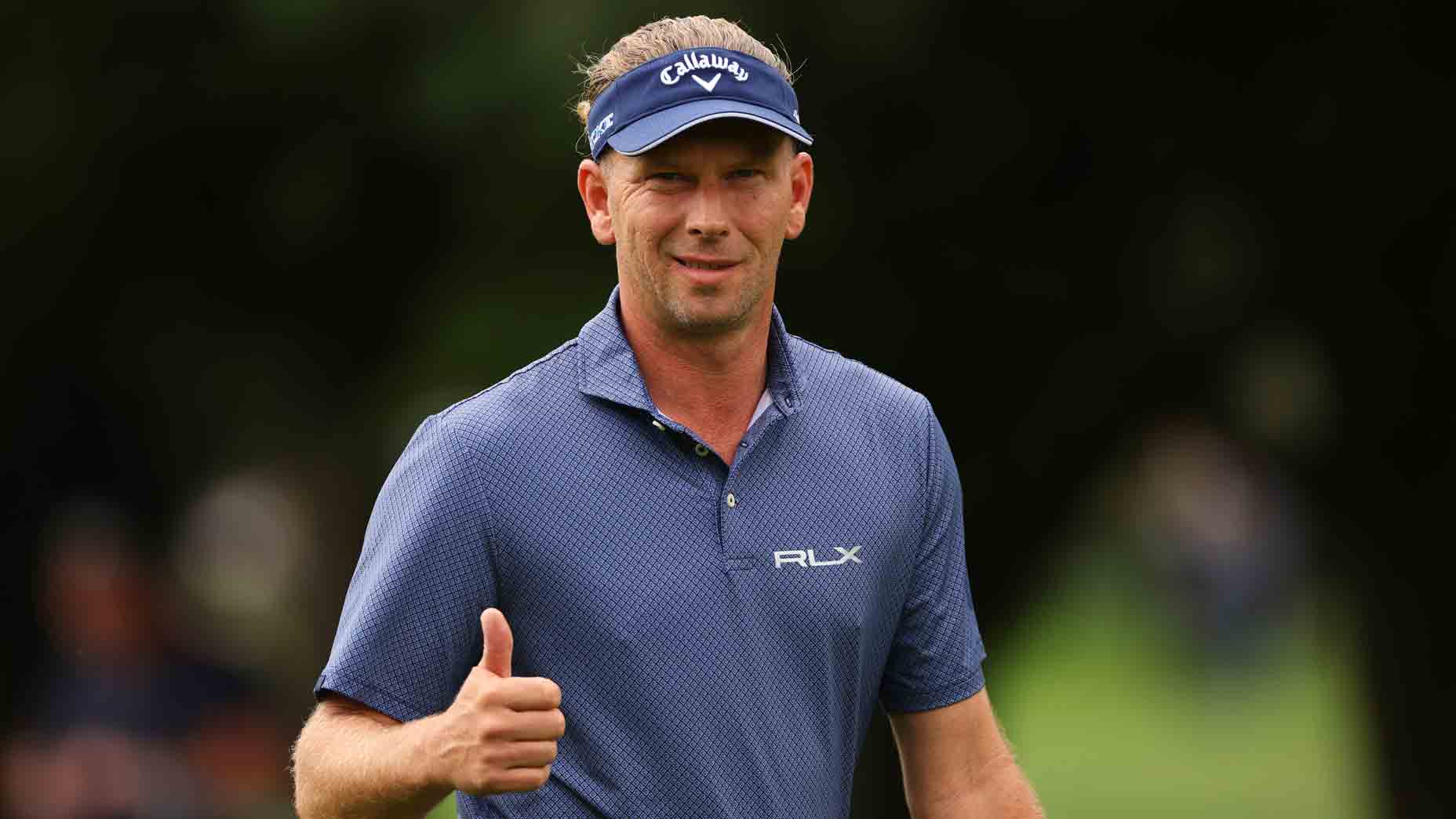Marcel Siem, he of the fist-pumps and seemingly unwavering enthusiasm, is frustrated. He’s failed. His ball has hit an alignment stick.
Back to 20 feet.
“OK,” he says, “so now I have to start again literally.”
The 44-year-old three-time DP World Tour winner was talking on a recently posted video to the tour’s social-media channels, and the subject was three-putt avoidance and a drill the German swears by. Twice, in fact, in the one-minute, 46-second video he labeled the exercise as the “best” exercise.
So what does it look like? The video is below. Give it a click. We’ll wait.
HOW TO AVOID THREE-PUTTING! 🚨@SiemMarcel shows us an easy-to-follow putting drill 👏#OEM2024 pic.twitter.com/f4awNB6pSk
— DP World Tour (@DPWorldTour) September 3, 2024
The beauty is its simplicity to set up, and its focus on getting to gimme range. To begin, Siem placed an alignment rod about a foot and a half behind the hole, and he suggested placing a marker of some kind — he used a tee — at the same distance in front of the hole. Consider that one-putt range — any ball that reaches that area is nearly considered good.
From there, Siem will putt from 6 meters (about 20 feet), 7 meters (about 23 feet) and (about 26 feet) three times. Each ball has to finish either ahead of the marker in front of the hole, before the alignment stick behind the hole, or in the cup.
Fall short of the marker, you start over. Hit the alignment stick, you start over. On the video, Siem did.
The drill develops touch.
Siem’s complete description of it, via the video, is below:
“Hey, guys, now I try to help you not to three-putt,” Siem started. “So the drill I do every day is from 6 meters, 7 meters, 8 meters. Three balls each. You’re not allowed to leave it short. And I put the alignment stick behind the hole, so this is the range where, you know, all of us are able to hole this from this range all the time. You know, if you go further than this, then you’re in three-putt area. I mean, for the pros, I’m not allowed to leave it short. So for you guys, I would make a tee here, a foot and a half in front of the hole. Something like this.
“And then they do 6, 7, 8 meters and three putts each. And when you leave one short or hit one too far, you have to start again. So this is the pressure you have because it can take for hours. But this is really the best, best drill you can do to get the touch for the greens and get that circle where you’re in the two-putt range.”
On the video, Siem then made two-straight putts from what appeared to be the 6-meter range.
“Easy, eh,” he said. “But no, when you do that every day, you start holing these putts more often as well because you gain confidence. It’s one of the best drills ever.”
Siem’s next putt then hit the rod behind the hole.
“OK, so now I have to start again literally,” he said. “But yeah, enjoy.”
Editor’s note: To help further the conversation, below is a story written in January by GOLF’s Zephyr Melton that was headlined “Data shows how likely you are to 3-putt based on your handicap.” You can also read it by clicking here.
***
The name of the game on the greens is avoiding three-putts. Sure, you want to hole your first putt when you can, but your biggest priority should be avoiding three-putts.
That mission can be easier said than done. Even for the pros, making putts from distance isn’t as likely as taking three swipes to get in the hole. According to data from 2021, a first putt from 33 feet had a make rate of 5.8 percent on the PGA Tour. The chances of a three-putt? A whopping 6.4 percent. That’s right, at just 33 feet, the likelihood of walking away with bogey was greater than the likelihood of making birdie — and that’s among the best players in the world! With that in mind, your first priority should always be keeping three-putts off the card.
The rate at which recreational golfers three-putt varies quite a bit across skill levels. Scratch players will three-putt less than five-handicaps, and fives will three-putt less than 15s. What do the exact numbers look like across skill levels, though? Thanks to data-guru Lou Stagner, we have those answers.
⛳️⛳️⛳️⛳️⛳️⛳️⛳️⛳️⛳️
— Lou Stagner (Golf Stat Pro) (@LouStagner) January 27, 2024
HOW OFTEN DO PLAYERS THREE PUTT?
Please note the data below is across all situations. These numbers will be impacted by many things including stimp of green, smoothness of green, difficulty level of putt, etc…
While three putt percent is “sort of useful”,… pic.twitter.com/bRhjgEcG7O
As one would expect, 20-handicaps have a much greater chance of three-putting than players of higher skill levels. At just 10 feet from the cup, they three-putt almost 7 percent more of the time than scratch players — and that gap only grows as they get farther from the cup. Once the 20-handicap gets into the 36-40 foot range, three-putting becomes almost a coin flip. Scratch players aren’t invincible, either. At that same 36-40 foot range, they three-putt just over 25 percent of the time, with five-, 10- and 15-handicaps three-putting at 33.8, 38.6 and 43.5 percent of the time.
You’ll also notice that the closer you get to the hole, the less likely you are to three-putt (duh). But what might surprise you is how close to the hole these three-putt percentages tend to significantly jump. A 20-handicap might be jumping for joy after hitting a green in regulation, but if they’re outside that 35-foot mark, a bogey is still very much in play.
Don’t let these numbers be too discouraging, though. There are things you can do to minimize your likelihood of three-putting. Chief among them? Distance control. Yes, direction matters, but your dispersion is going to be much larger front-to-back than it is left-to-right. Improving your distance control will shrink that front-to-back dispersion and help you reduce those three-putts.



